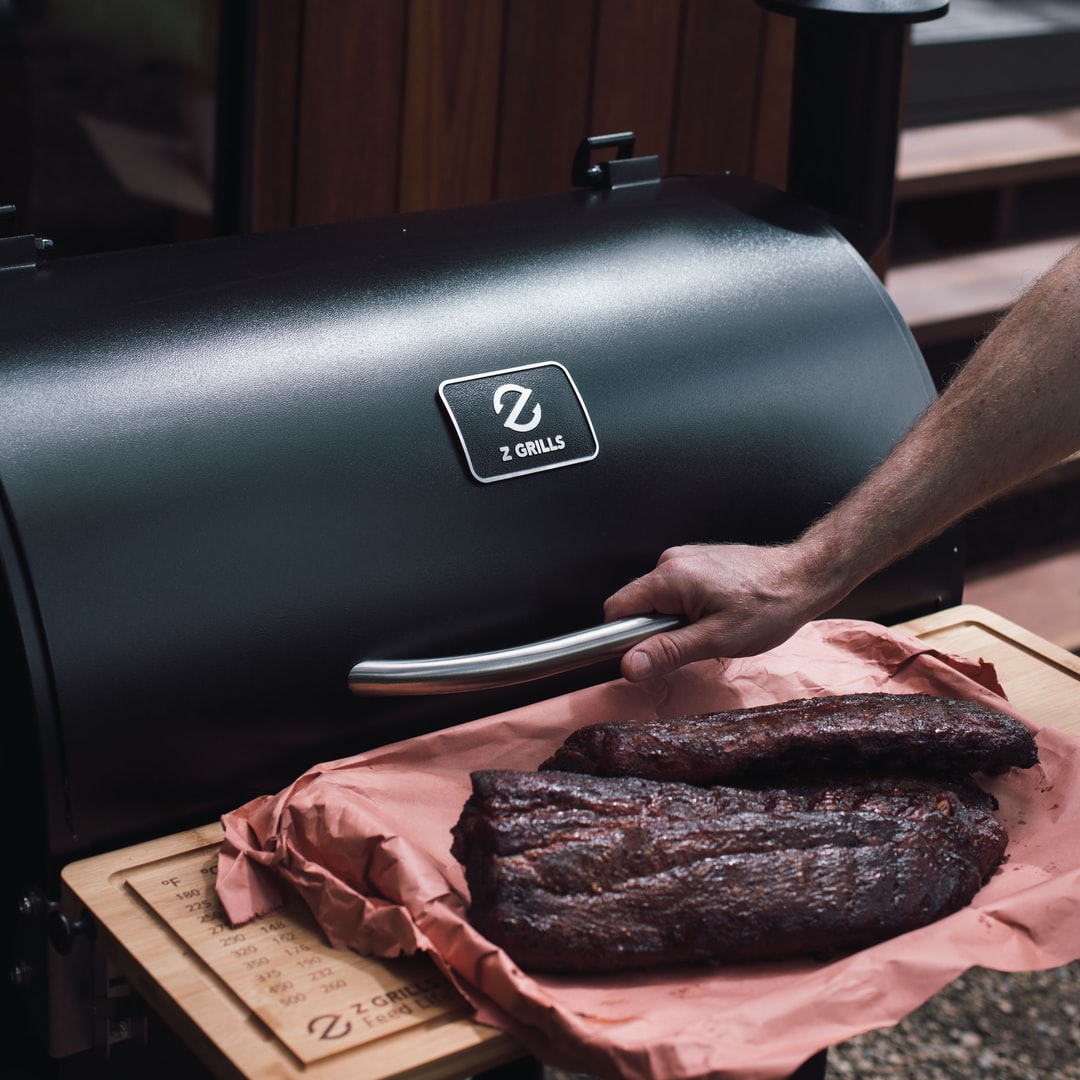
Over two-thirds of all Americans own a grill or smoker. It’s easily one of the most beloved forms of cooking in the country. Whether the draw is being an awesome outdoor BBQ host or the intoxicating flavors—smoke and food is a winning combo. If you’re looking to get a membership into the flavor town club, this entry-level smoking guide is for you!
In this short beginner’s guide, we give you the best advice on choosing a smoker on a budget. We also clear the air on smoking time, wood types, and other products to inject the most flavor. Grab a seat and a bib, it’s time to get smoking!
Note: most links in this article are Amazon.com Affiliate links, see Affiliate Disclosure, thank you.
Smoker Type and Maintenance
As a beginner, choosing the right smoker type and maintaining it can be overwhelming. Fortunately, entry-level smokers don’t need to break the bank to get started. First and foremost, consider purchasing either a charcoal or electric smoker. Both provide great, user-friendly options for novice smokers.
Also, it is important to note that the durability and make of the smoker are imperative to its performance. Ensure that smokers are cleaned after every use, and conduct an overall check of the smoker before every use to avoid any unpleasant surprises during a smoke session. In addition, follow the manufacturer’s manual closely, as they contain valuable maintenance tips for each smoker type.
Temperature Control
Maintaining the right temperature is vital in smoking meats. No matter the skill level, perfecting the temperature to avoid overcooked or undercooked meat can ruin an entire session. Many smokers come with built-in temperature monitors, but we highly recommend investing in a digital thermometer.
This nifty tool relieves monitoring and temperature stress: with just a quick glance, your instinct to open up your smoker every 10 minutes during a smoke session is subdued, meaning a more comprehensively cooked piece of meat.
It is also important to handle flare-ups that can happen when the cooking temperature becomes too hot. Hardware stores offer flame-retardant fabrics that can be used to cover and try to regulate temperatures. However, it is important to note that consulting the manufacturer’s manual on the safe use of stuff like retardants from fabric to wood is necessary to know.
Practice in a safe environment when searching for ways to control temperatures before you experiment with any adjustments during an actual smoke session.
Smoking Time
Smoking meat requires practice, and figuring out the nuances of smoking various types of meat takes time. Some entries, like hot dogs, steak, or minced meat, acquire the smoky flavor more quickly, making it necessary for rookies to exercise caution not to keep these in the smoker for too long.
When it comes to larger meats such as turkey and beef brisket, longer cooking times are required in smoking—with briskets taking as much as 10-12 hours to cook. Be watchful of temperatures and times, as they differ for the various slices of meat being cooked. Lean cuts of meat like beef require less time, while undertaking tougher meat parts like pork butt takes longer, even overnight, depending on smoking calculation and the technique being employed.
Wood Types
The type of wood used in smoking has the power to alter the flavor of the final dish, which is why experimenting with various wood types is crucial. Normally, novices tend to make their choices based on their personal preference. For people new to smoking meals, hardwoods, such as mesquite, hickory, and oak, impart deeper, richer flavors.
However, if a sweeter flavor is required, chips made with cherrywood, applewood, or pecan wood are suitable wood types.
Budget-Friendly Products
Many brands like Weber, Char-Broil, and Masterbuilt offer budget-friendly offerings for novice to intermediate-level smokers. Their prices range between $100 and $300. Digital-read smokers and charcoal options are cost-friendly, providing an abundant range of smokers for newbies.
Beginners can also seek LED lighting for cooker visibility, non-stick surfaces for food release, and temperature probes to prevent overcooking.
Optional Smoking Products
For a successful start, it is best to avoid spending excessively on smoking products. By opting for affordable online purchases of smoking bags, wood chips, smoking tubes, and smokers that are under $300, you can still achieve excellent results while saving money. Check out these affordable smoking products worth trying:
Smoking Pouches or Smoke Bags: These are a great alternative for indoor smoking or when using a full-size smoker isn’t possible.
Smoke Tubes: They are a much cheaper alternative to a full-size cold smoke generator, getting the job done at a fraction of the cost. They are also available in square that can be filled with your favorite wood pellets or round trays that can be filled with fine woodchips or sawdust.
Common Smoker Questions
Novice smokers often grapple with queries concerning smoking, which is entirely understandable. For example, when to wrap, how often to monitor the meat temperature, etc. It is crucial for people entering the world of smoking to acquaint themselves with basic smoking techniques.
Reddit’s r/smoking offers skill growth from beginner to pro. Opting to brainstorm by asking for costly private sessions (usually run by experts or restaurants offering barbecue) can be supplemented or replaced by accessible networks of digital spaces that offer similar value.
Entry-Level Smoking Advice
For new smokers, establishing ideal smoking skills takes practice, research, and dedication. Purchasing a book like Jeff Philips’ “Smoking Meat: The Essential Guide” provides a complete guide to smoking, including recipes and serving sizes for different types of meat.
Nevertheless, acquiring smoking knowledge from online communities can provide valuable information, thus mitigating the need for a pricey cooking course. If you’d like to get some personal-tailored smoking advice, feel free to contact us here.

